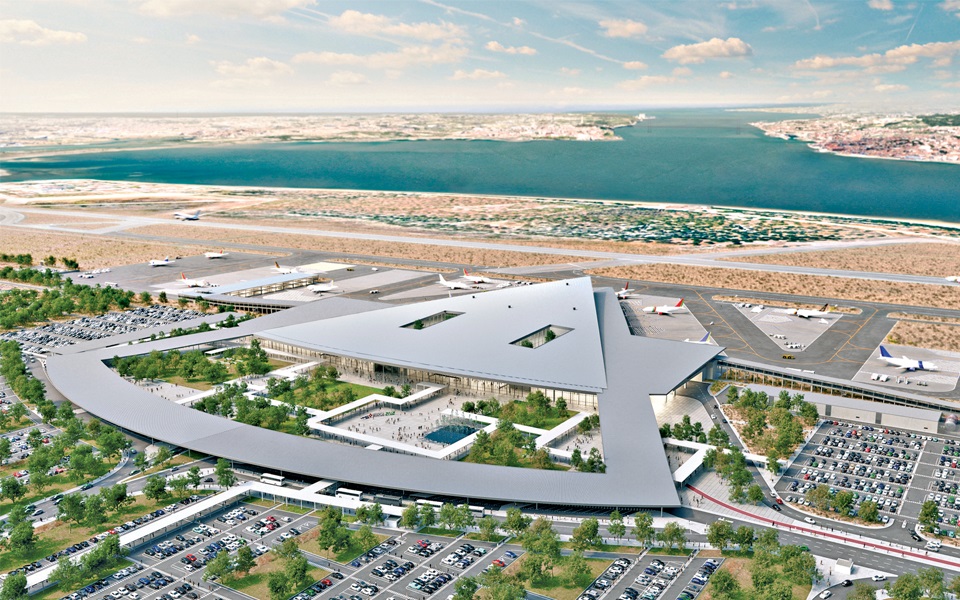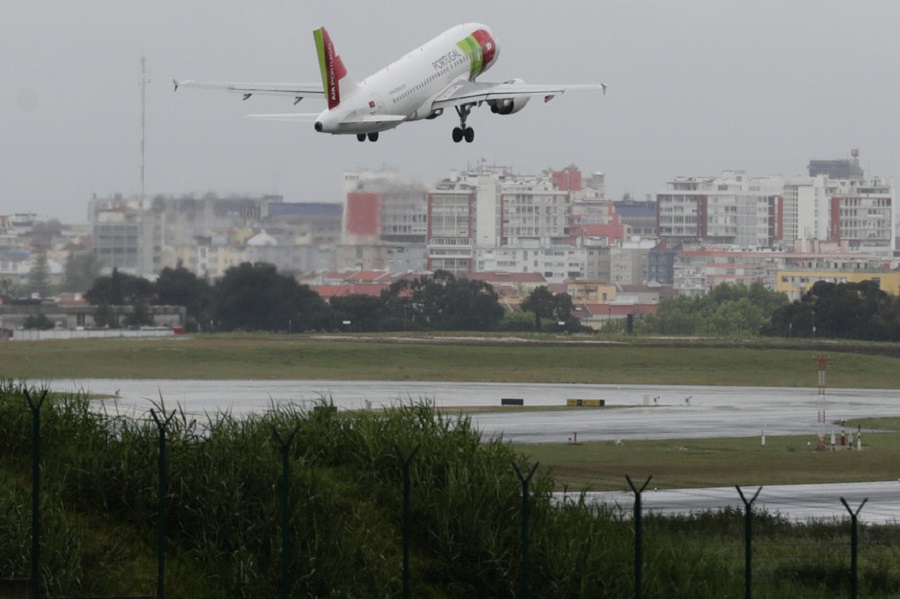RIO DE JANEIRO, BRAZIL – Six environmental organizations have denounced the environmental study, which gives the go-ahead to the future Lisbon airport, which will be located in the town of Montijo.
After half a century of studies evaluating options in different places, the chosen site is in a military airbase in the Tagus estuary, the country’s main flooded area, with a rich fauna protected by international treaties. The facility is key to decongest the so-called “worst airport in the world,” according to the company specializing in AirHelp complaints.

If the opposition parties – PC (Communist Party), The Greens and PAN (People, Animals, Nature) – fail to stop it, and if the environmental organizations Zero, ProTejo, the Portuguese Society for the Study of Birds, Rocha, GEOTA, the Fund for the Protection of Wildlife and the League for the Protection of Nature also fail to stop it, Lisbon will have a second airport in 2023.
It will be located 24 kilometers away from the current airport, on the other side of the estuary formed by the Tagus at its mouth in Lisbon.
“Lisbon’s Humberto Delgado airport is not collapsing, but rather exhausted,” said Francisco Pita, manager of ANA (Aeroportos de Portugal), in a meeting with travel agencies. The forecasts failed and the Portuguese government found itself with its hands tied.
In 2008, the first national airport was expected to be hosting 19 million people in 2018. There were an additional ten million. This year it will exceed 30 million.
Of the 132 airports analyzed by AirHelp, the Lisbon airport ranks last in a study published in May on punctuality, quality of service and infrastructure. In the classification of the British consulting firm OAG, the Lisbon facility ranks 1,778 out of 4,000 airports in terms of punctuality.
Until Montijo is adjusted, 1.8 million tourists will stop visiting Lisbon because there is no more capacity at the current airport.
All political parties agree that another airport is urgently required, but disagree with the solution adopted. Faced with other options, the conversion of the Montijo airbase was chosen by the Government of António Costa for being the cheapest and fastest to start operating.
The French company Vinci, the concessionaire of the country’s airports since 2012, will be liable for the expenses: €1.15 billion (US$1.25 billion) until 2028, €500 million to adapt Montijo, €156 million for the access works and the remainder to upgrade Lisbon airport, which will remain the main one.
Between the two, aircraft traffic per hour will increase from 38 to 72. Lisbon will retain the long-haul destinations of the main airlines and Montijo will host the low-cost airline transfers should Vinci offer a large reduction in fees.
Montijo is cheap, fast and will generate 10,000 jobs in the region, according to forecasts. Its main issue is its high environmental impact. Measures to reduce it (including the insulation of nearby homes) could cost up to €100 million, which could lead to a renegotiation of the agreement between Vinci and the government.
The airbase and its extension are on a sandy beach in the Tagus marshes, the country’s largest wetland area and one of Europe’s most significant for the conservation of seabirds. The environmental study acknowledges this damage but announces measures to minimize it.
The environmental group Zero denounced the environmental study for failing to estimate greenhouse gas emissions from planes, which will clash with the government’s goals of achieving carbon neutrality by 2050. “The doubling of passenger traffic in the two airports, from 30 to 60 million, is a completely contrary view to the sustainability of the planet,” says Francisco Ferreira, president of Zero.

Flooding
The rise in sea level, which could reach one meter by the end of the century, ten times more than the previous study, according to the UN Climate Change panel published that year, will also mean more work for engineers at the site. If the project is not modified, one of Montijo’s runways would be flooded with tides. The government does not expect Montijo to endure until the 22nd century either: it is giving it a maximum life span of four decades.
All parties understand that Lisbon needs an alternative, but the location is divisive. The PSD, which introduced the concept of Montijo six years ago, is now reluctant. The engineers’ union votes for the town near Alcochete, just like the PC and The Greens.
The mayors of neighboring Seixal, Moita and Setúbal also favor Alcochete, on the same riverbank as Montijo. To further aggravate the situation, a group of entrepreneurs surprised everyone by coming up with a very detailed plan to build it in Alverca, on the same bank as Lisbon.
Time is pressing. Lisbon’s airport, which is collapsing and exhausted – and in the city area – is unable to withstand annual growth of ten percent. The Prime Minister, António Costa, reminded Parliament that all calendars have been exhausted: “The establishment of this airport has been urgent for 20 years now”.
If Montijo does not work out, any alternative will entail a further ten years delay.
Airport running on limited time
The Humberto Delgado Airport will close for works on the runway between the months of January and June 2020 from 11:30 PM to 5:30 AM, announced on Tuesday, November 26th the general director of Easyjet, a low-cost company that operates Terminal 2.
ANA – Airports of Portugal confirmed the closure of the Portela runway between 11:30 PM and 5:30 AM as of January 6th for the completion of works. At stake is the creation of two quick runway exits “at Humberto Delgado Airport, with a view to improving the efficiency of the operation, obtaining greater fluidity in the circulation of aircraft, reduction of routes and CO2 emissions.”
This was communicated to the airlines in advance in order to allow for the readjustment of supply and slots. An official source from the Ministry of Infrastructure said that the government had been briefed, but ruled out the possibility of aircraft being diverted.
“They will have to adapt their schedules so that they can respect the banned periods, as is already the case today”.
The general director of Easyjet further states that the airlines will be forced to readjust their flights, as they are unable to land or take off between 11:30 PM and 5:30 AM.
“Nobody said anything about eliminating routes. There was a specific route at the scheduled time within this period. What we have been doing is adjusting. Some flights on these routes had to be readjusted”. There is one particular route that is most affected. But in case of delays in arrivals, flights can be diverted to other airports.

Although the works “affect the airport as a whole”, in the end, the executive reiterates that it is for a good purpose: “It will improve the operability of the airport as a whole”.
In addition, “this is an issue that has been debated and discussed,” and therefore the appropriate adjustments are being safeguarded.

